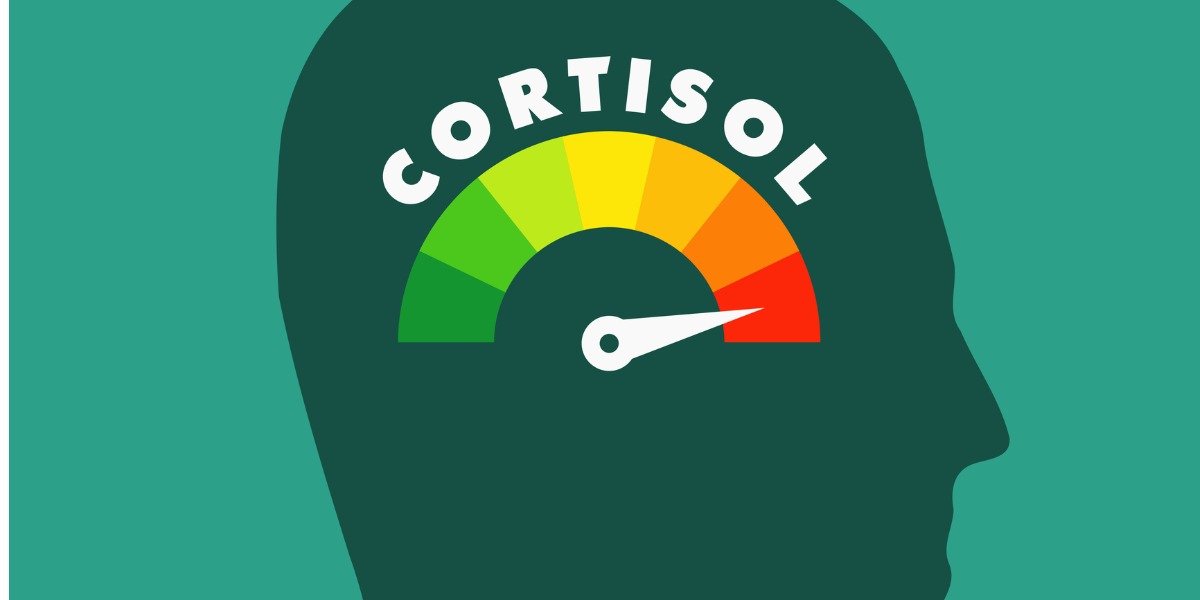When we talk about cortisol, it’s most often connected to stress and mental health, and it’s rarely positive: in most cases, we want to reduce stress, and in this article, we’ll teach you several ways you can reduce stress by reducing cortisol circulating in your body – and you can start them all, right now, with no special training or knowledge.
Understanding stress and how to reduce it is important, because stress is directly related to mental health. The more stress in your life, the more likely you are to experience psychological and emotional challenges. It’s worth repeating that there’s a simple, physiological way to reduce psychological and emotional stress: by reducing cortisol, which you can do by taking several easy, practical steps.
We can help you start the process by offering a primer on cortisol. We’ll discuss what it is, what it does, and why it’s important. We’ll close by reviewing the potential negative consequences of prolonged exposure to high levels of cortisol in your body and discuss the importance of learning how to manage your cortisol levels independently.
What is Cortisol?
Cortisol is a hormone produced by the human adrenal system that’s essential to both our day-to-day functioning and our overall survival. To vastly oversimplify the role it plays in our bodies, we can say cortisol does three primary things: it helps us eat, sleep, and handle stress.
In other words, cortisol is necessary for optimal human functioning. We can’t live without it.
Isn’t Cortisol the Stress Hormone?
When most of us hear the word cortisol we think of stress, but that’s not fair to cortisol. The hormone cortisol is not just associated with our stress response. When a person experiences extreme stress, the endocrine system engages and initiates the fight or flight response. When a person experiences extended periods of extreme stress – called chronic stress – the hormones associated with the fight or flight response – especially cortisol – can become a problem. However, cortisol is involved in functions aside from the fight or flight response. It also plays a crucial role in regulating critical processes in our bodies on a daily basis.
Cortisol: Functions and Benefits
Aside from the fight/flight function, evidence published by the National Institutes of Health (NIH) in the article “Effects of Stress Hormones on the Brain and Cognition: Evidence From Normal to Pathological Aging” shows cortisol is also involved in:
- The sleep/wake cycle:
- Our cortisol levels are highest in the early morning. This gives us the energy we need to get going and start our day after a night of sleep.
- Our cortisol levels drop throughout the day and are lowest during the evening. This helps us relax and allows us to fall asleep and get a god night of rest
- Regulating glucose, a.k.a. blood sugar:
- Cortisol increases the level of circulating glucose in the body, and cortisol also causes the release of insulin, which decreases the level of circulating glucose in the body. This dual action helps control levels of glucose in our bodies throughout the day.
- Memory:
- Evidence shows that the acute release of small amounts of cortisol improves the formation of memories. In contrast, the presence of cortisol can impair memory retrieval.
- Thought and Cognition:
- After periods of elevated stress, the presence of cortisol activates and increases executive function in the brain, facilitating memory formation related to the stressful experience.
- Long-term exposure to high levels of cortisol can have the opposite impact, and may impair executive function and cognition.
In addition, evidence shows the presence of cortisol receptors in almost every tissue in the human body, and can have an effect on virtually all our organ systems, including:
- Nervous system
- Immune system
- Cardiovascular system
- Respiratory system
- Reproductive system
- Musculoskeletal system
In general, cortisol acts in two ways in the body: proactively and reactively.
We’ll explain.
Proactive Cortisol Action
Proactive cortisol action coordinates natural physiological patterns like our sleeping and eating cycles. It works behind the scenes and follows a predictable, daily schedule. The proactive mode of cortisol action keeps our internal trains running on time. It makes sure our body knows when we should sleep, when we should get up, when we need a meal, and when to digest that meal.
Most people have heard the phrase circadian rhythm, which we mention above. Our adrenal glands release cortisol every day in a diurnal pattern. We get a dose about 30 minutes after we wake up, then cortisol levels in the bloodstream taper off gradually over the course of the day, with the lowest levels present at night. We’re used to this, and we all experience this every day of our lives. We have energy during the day, then when the sun goes down, we get tired and go to sleep.
Reactive Cortisol Action
Reactive cortisol action regulates our ability to adapt to and recover from stress. In the reactive mode, external stimuli trigger the release of cortisol. It floods our system almost instantly when we sense danger or identify an acute survival risk. One second, we’re having a normal day doing our thing, then an event in our environment triggers our internal alarms and our reactive cortisol response kicks in. Adrenal glands dump cortisol into our bloodstream and suddenly we’re keyed up, ready for intense action in order to survive the stimuli we identified as dangerous.
As we mention above, this is what most people call our fight or flight reflex. When we think of it in evolutionary terms, the fight or flight reflex helped keep humans alive for thousands of generations. It gives our body the energy we need when we need it most. Thanks to the cortisol released in the reactive mode, we have the strength to confront the danger and fight for our lives, or the sense and speed to turn and run for our lives until we’re safe.
There’s a catch, though. Sometimes our reactive system doesn’t turn off like it should. This can result in chronic exposure to high cortisol levels, which can cause problems.
Consequences of Elevated Cortisol
Long-term exposure to elevated cortisol levels can have serious consequences.
Our stress response evolved to promote survival, but the modern world presents our bodies with chronic exposure to stressors our bodies aren’t well-equipped to deal with. And our physiological systems don’t distinguish between the psychological pressures adults face and the external physical stimuli our stress response system is designed for. Our distant ancestors dealt with immediate matters of survival, while many of us today are under constant life-stress. When our cortisol levels surged in response to danger in days gone by, the chances are they normalized after the danger passed. One problem in the modern world is that many of our stressors don’t go away, and our cortisol levels don’t always normalize appropriately.
When our body is over-exposed to cortisol, there are at least two categories of negative consequences: psychological /emotional and physical.
Psychological/Emotional Consequences of High Cortisol
- Irritability
- Anxiety
- Insomnia
- Mood swings
Physical Consequences of High Cortisol
- Impaired immune function:
- Increases risk of catching colds or other communicable diseases
- Decreased cytokine (immune system messengers) action, which has a negative impact how our body handles infection, inflammation, trauma, and disease
- Impaired reproductive health:
- Irregular ovulation in women
- Decreased sperm count, decreased testosterone, decreased libido in men
- Insulin resistance, a.k.a. the inability of our body to process insulin. Insulin resistance can lead to:
- An increase in belly fat
- General weight gain
- Elevated lipid and triglyceride levels
- Hypertension
- Increased risk of prediabetes or type 2 diabetes
That information confirms that prolonged exposure to cortisol – which typically happens in response to chronic exposure to stress or danger – can lead to very serious unwanted consequences. That’s why it’s important to learn the warning signs associated with high – and possibly dangerous – levels of cortisol in the body.
High Cortisol: What to Watch For
The lists above include the most common consequences of high cortisol, which we can also consider warning signs/symptoms of high cortisol. To recap, the most common signs are:
- Extreme emotions
- Mood swings
- Escalating Anxiety
- Insomnia
If you or someone you love experiences the symptoms or warning signs of high cortisol, it’s important to understand it’s possible to take action and reduce cortisol levels on your own. When you understand you can take proactive steps to reduce the levels of cortisol circulating in your body – based in the latest science on cortisol and stress management – you empower yourself to manage an important component of your overall physical and mental health and wellbeing.
To learn how to reduce cortisol in your body yourself, please navigate to our blog and read this article:


 Gianna Melendez
Gianna Melendez Jodie Dahl, CpHT
Jodie Dahl, CpHT